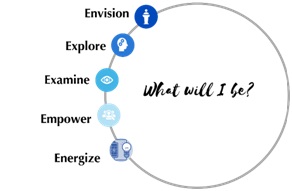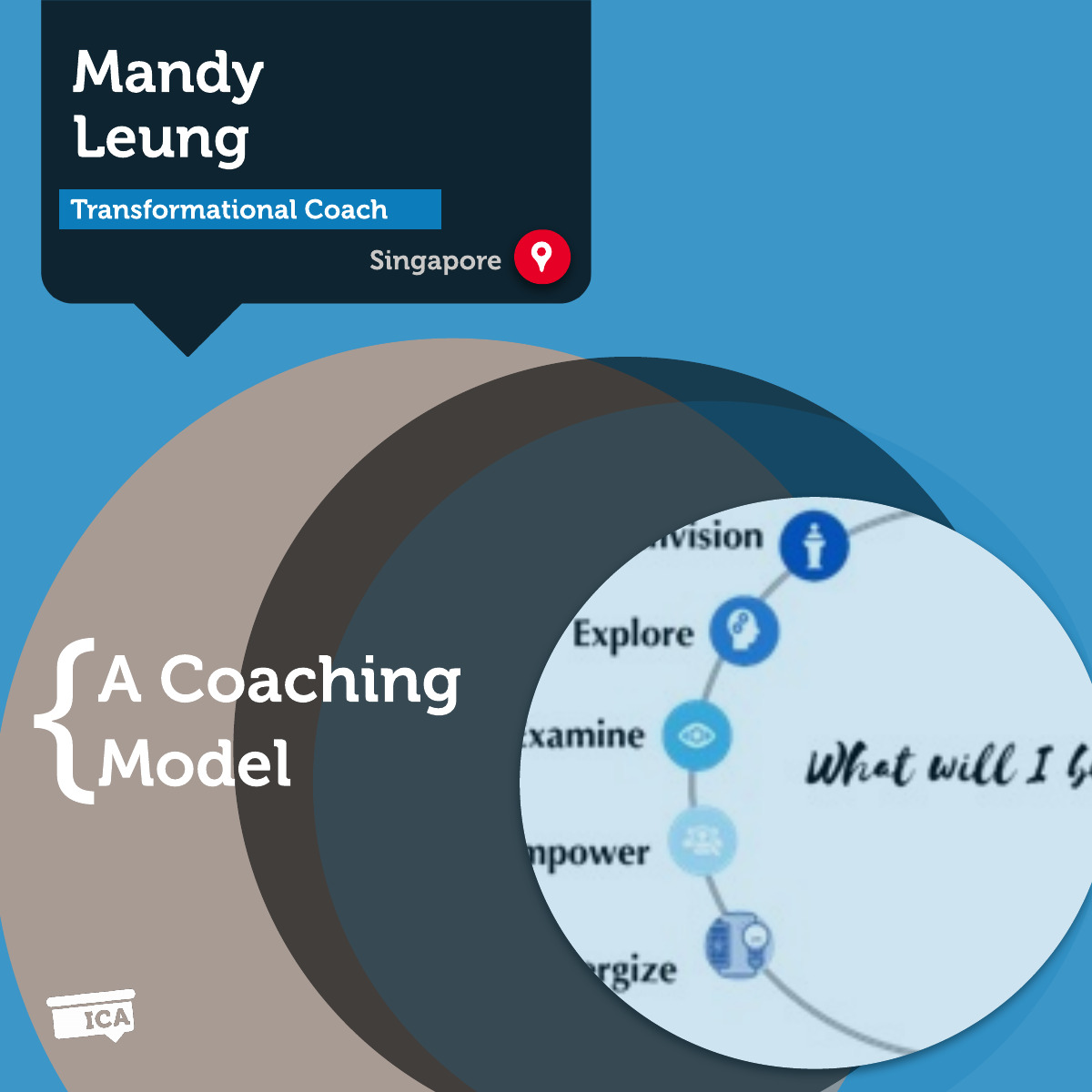A Coaching Model By Mandy Leung, Transformational Coach, SINGAPORE
A 5E Millennial/ Gen Z Managers Guide
More than 6 in 10 millennials say they moved into management because it was the only way to advance their career and earn more money.
Millennial/ Gen Z managers are known as “always-on” and that could be easily burning them out. And they were struggling with delegating. 57% of millennial managers expected teammates to respond to the outside working hours.
According to the most recent Global Shapers Survey report, young generation people feel that they are perceived as lazy, impatient, and entitled. They are also known as the “job-hopping generation,” who care little for work. The top two most important criteria when considering job opportunities: are “salary/financial compensation” (49.3%) and “sense of purpose/impact on society” (40.6%).
We are living in a completely different world of work. According to Denning and Brown, much of what we learned 10 years ago is obsolete and half of what we learned 5 years ago is irrelevant. In addition, more than 45% of work can be done remotely. Jobs may become irrelevant every 4 years. Workers experience 5-6 career turns in a lifetime.
Imposter Syndrome is also quite commonly found in the young generation when they moved up to a bigger role or team leader. There are inner voices with negative messages like “you’re not smart enough” or “you’re a fraud”. According to Sheryl Sandberg’s book – Lean In, she cites the studies proving the prevalence of imposter syndrome amongst women and it is largely due to self-confidence. Imposter Syndrome feelings represent a conflict between your self-perception and the way others perceive you.
Given that the workplace is evolving and the expectations for the managers are evolving as well, how can our young generation (millennial and gen Z) lead the team in a “never normal” environment? Many of our coaching clients (in their 20s, 30s, and even 40s) come to the coach with the question “what’s my purpose?”.They have a strong desire to make a positive impact in the world, but they are unsure how to do it.
This coaching model (5E) is aimed at helping coaches to guide young emerging managers to find the meaning/ purpose of life, to empower and energize themselves to find their solutions. This model can be used as a transformational tool for people going through changes in personal or professional life.
5E Model
- Envision
- Explore
- Examine
- Empower
- Energize
E – Envision
Think of that time when you’re engaged, energized, and enjoying life. What are you doing?
- What motived you the most?
- What difference do you want to make through your work?
- What do you want?
- What will this give you?
- When was the last time you felt optimistic or excited about the day ahead?
Look for common threads and capture your client’s thoughts, feelings, and impressions. Creating a virtual vision board may help the client to identify his/ her great passions.
E – Explore
Exploring is like using the compass, the needle may move from one side to another until we find out the true North. Through exploration, the coach focuses on “who” rather than “what” or “how”. Using powerful questions, the coach partners with the clients to find out the true north and align with their core values. Be curious (not judgmental) to explore the true meaning of the topic and the feeling of the client.
Explore the importance of the topic:
- What is important/ significant to you now?
- What will happen if not taking this step?
- What makes you bring this forward at this time?
Explore the client’s feeling
- You mentioned that you feel embarrassed. How would you define embarrassment?
- You mentioned that you feel anxious. How does this feeling serve you?
- How does your colleague/ friend see you when you are annoyed?
- You mentioned that you feel embarrassed. What is leading you to feel like this?
- What does this tell you about yourself?
- When you mentioned “being motivated”, what would that look like?

E – Examine
- What’s your biggest obstacle?
- What’s getting in the way?
- Imagine you had no barriers or obstacles, what would that look like?
- Based on where we are, what would be helpful for the rest of the conversation?
- What is true right now?
- What is it costing you to keep hoping for [expectation] when it may or may not happen?
- What evidence is there to support what you are saying?
- What is the consequence of that assumptions?
E – Empower
Make the most of every opportunity that comes your client’s way. Be strategic and consider how the opportunity aligns with his/ her purpose/ goal. The focus is: how can we move from where our client is to where our client wants to be? Also, the coach partners with the client to paint the picture of moving forward.
Remember to support our clients to achieve consistent and meaningful results that are long-lasting and impact other aspects of their life.
- What is possible now?
- What can do you within your control?
- If you could start again, how would you do it differently?
- What changes are needed to make to move forward?
- What will you commit to doing now?
- What could get in the way of your commitment?
- What is the first step you can take?
- What other support or resources will help?
- What are some of the structures that will make this goal easier to achieve?
- What things can you bring into your routine to support this new behavior?
Encourage your client to start giving credit for their achievement rather than brushing them off. In addition, providing structure and a support system can help maintain and sustain their growth.
E – Energize
- How do you feel about your insights and plans?
- What has become clearer?
- What have you noticed?
- What is your take-away from this session?
- Given that learning, what can you see “possible” now?
- How can you apply those learnings in other aspects of your life?
As a coach, we need to facilitate the conversations and draw the connections. The power of connectivity will help your client to be aware of his/ her inner purpose and it also facilitates the shift in terms of mindset, perspective, and behavior.
There is nothing that can be compared with living your life with curiosity. We need to constantly ask ourselves and the clients, “What inspires me? What makes my heart sing?”. As a coach, if you can open your clients’ eyes to visualize their feelings and thoughts towards the purpose, they will notice a trill of hope, a shiver up their spines, a way their eyes light up, and a butterfly flying in their stomachs, but all these signs when we discover something that sparks joy and align with our purpose.
Learn How to Create Your Own Coaching Model
Your Coaching Model reflects your values,
philosophies and beliefs and must communicate who you will coach
and the problems you will solve. Read more about creating your coaching model
References
Millennials Are Managers Now by Zapier Editorial Team
8 Tips to Lead the Next Generation by World Economic Forum
Skills aren’t soft or hard — they’re durable or perishable by Matthew J Daniel
Six Ways To Discover Your Life Purpose by Forbes
Emotional Agility by Susan David
You’re Not a Fraud. Here’s How to Recognize and Overcome Imposter Syndrome by Healthline
The Half-Life of a Learned Skill is 5 Years – Toward a New Culture of Learning by Mark Gibson
Deloitte Global 2022 Gen Z and Millennial Survey Report
